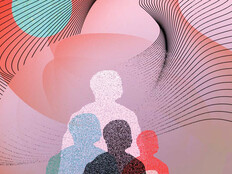Microsoft Azure for Students: Creating An Award-Winning Project Idea
My electrical and computer engineering students from Aristotle University of Thessaloniki, Greece, finally received exposure for their work on the PROGNOSIS project when they placed at the Microsoft Imagine Cup 2015 World Finals.
The PROGNOSIS project focused on how to find early prognostic indices of Parkinson’s disease from the everyday use of smartphones and smartwatches. It brought a wide range of open handling issues. The main one was data, or better yet, Big Data.
SIGN UP: Get more news from the EdTech newsletter in your inbox every two weeks!
Azure for Students Offers Flexibility for Educational Technology
Having a “glocal” idea — a solution that applies locally, but also has a global impact — demands flexible capabilities from its technological realization. Since PROGNOSIS demanded dense data sampling from everyday interactions with smartphones and smartwatches, the only meaningful solution for Big Data archiving and handling was the cloud — specifically Microsoft Azure.
What looked almost impossible for my students in the beginning, Azure made possible. Azure can archive and analyze data features from many users, allowing for large-scale computing processes and implementation of predictive analytics.
Students’ Dream Project Becomes Real
What started as an idea with my four students at the Microsoft Imagine Cup, was exponentially enlarged in 2016 as a large-scale research project, Intelligent Parkinson’s eaRly detectiOn Guiding NOvel Supportive InterventionS, or i-PROGNOSIS. The project secured $5 million in funding from the European Union’s Horizon 2020 research program.
Azure played a crucial role in the transition from PROGNOSIS to i-PROGNOSIS. It allowed for secure storage, scalability and reliability in handling behavioral Big Data from users across many countries in the most efficient way.
The i-PROGNOSIS model empowered more of my students to get acquainted with Microsoft Azure’s capabilities and think of ideas that could set them as solution enablers in a world citizen perspective.
Microsoft Azure App Fights Classroom Bullying
In 2016, my four-student team, AMANDA, used Azure to archive, analyze and model behavioral data from the interaction of youngsters to form a virtual empathy museum. The team created a gamified virtual reality app to fight bullying by letting VR users experience its emotional impact.
Team AMANDA won first place in World Citizenship at the Microsoft Imagine Cup 2016 World Finals and the project transformed into a large-scale experiment with 2,500 young people.
My students have formed new teams since, again showing how Azure can help students’ innovative ideas, born within the educational environment, become research outcomes and tangible societal products.
In fact, the Azure for Students has capabilities of virtual machines (multi-core, fast CPUs with big memory), mobile services, predictive analytics and machine/deep learning from Big Data, have been set as the effective vehicle for pioneering students to achieve massive scalability and make their ideas a reality.
In this context, physical boundaries become obsolete. The educational environments are integrated into students’ lives, providing them with an information system domain where everything seems possible.









